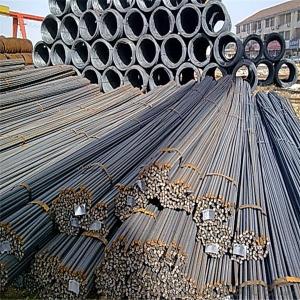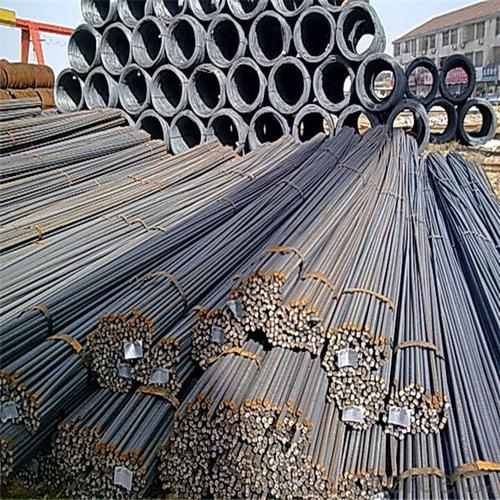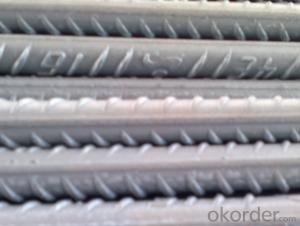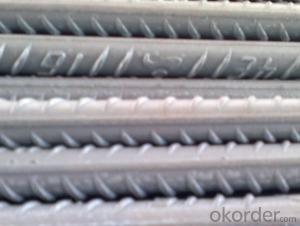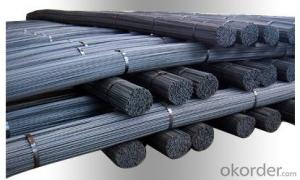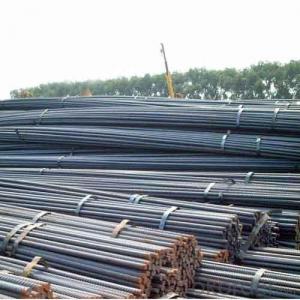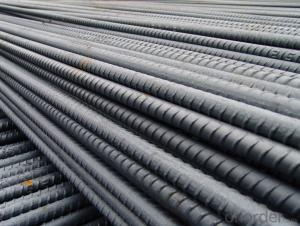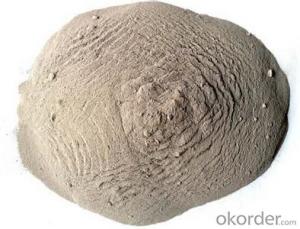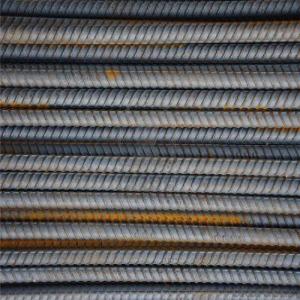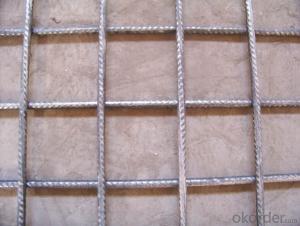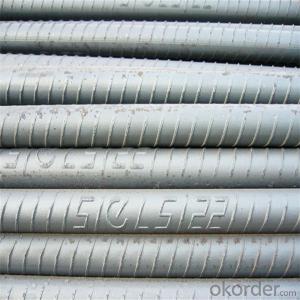Reinforced concrete iron rod for building construction
- Loading Port:
- China main port
- Payment Terms:
- TT OR LC
- Min Order Qty:
- 100 m.t.
- Supply Capability:
- 18000 m.t./month
OKorder Service Pledge
OKorder Financial Service
You Might Also Like
Specification
Rebar has ridges that bind it mechanically to the concrete with friction, it can still be pulled out of
the concrete under high stresses, an occurrence that often precedes a larger-scale collapse of the
structure. To prevent such a failure, rebar is either deeply embedded into adjacent structural members,
or bent and hooked at the ends to lock it around the concrete and other rebars. This first approach increases
the friction locking the bar into place while the second makes use of the high compressive strength of concrete
Our Advantage: High quality steel products from 1 class mills in China
Reasonable price
Professionalism of the products
On-time delivery
Complete documents and certificates
Sincere service to meet our clients' requirements
Product Description :
Chemical composition (%): | Steel | C | Si | Mn | P | S | Ceq | ||||
HRB335 |
0.25 |
0.80 |
1.60 |
0.045 |
0.045 | 0.52 | |||||
HRB400 | 0.54 | ||||||||||
HRB500 | 0.55 | ||||||||||
Mechanical properties | Steel | Rel/ MPa | Rm/ MPa | A/ % | Agt/ % | ||||||
≥ | |||||||||||
HRB335 | 335 | 455 | 17 |
7.5 | |||||||
HRB400 | 400 | 540 | 16 | ||||||||
HRB500 | 500 | 630 | 15 | ||||||||
Package: | Standard export packing or as customer's request | ||||||||||
Application: | Construction, building, bridge, road. ect | ||||||||||
Payment terms | 1).100% irrevocable L/C at sight. | ||||||||||
Delivery time | 15-30 days after receipt of L/C or deposit by T/T | ||||||||||
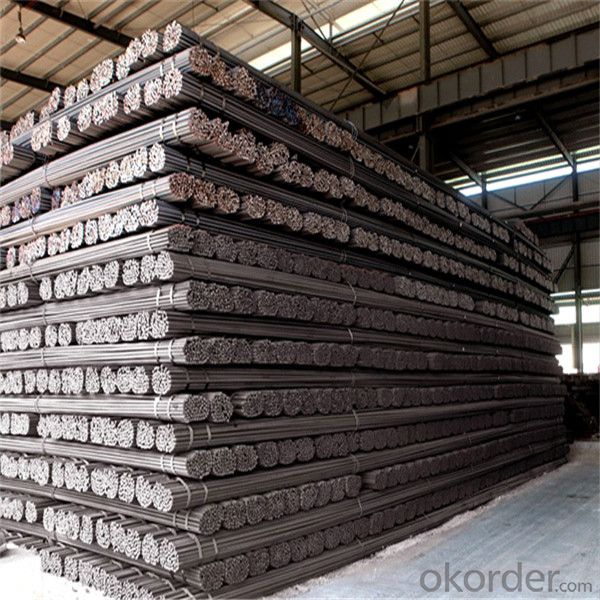
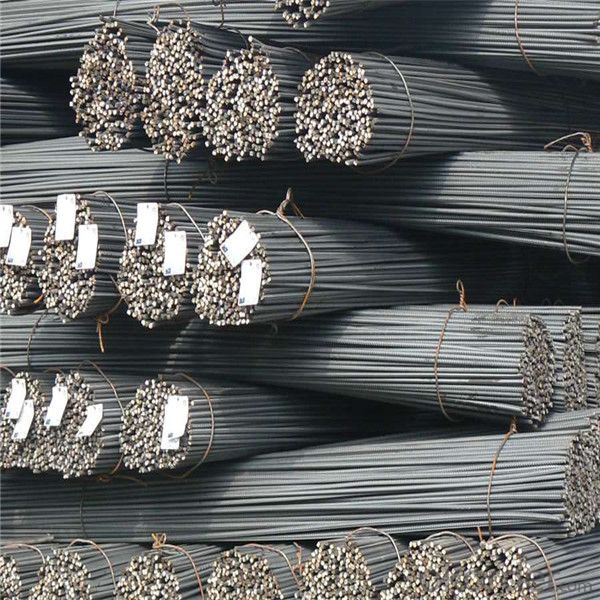
Packing:
In bundles, each bundle weight 3.5 tons. Load by container or by bulk verssel.
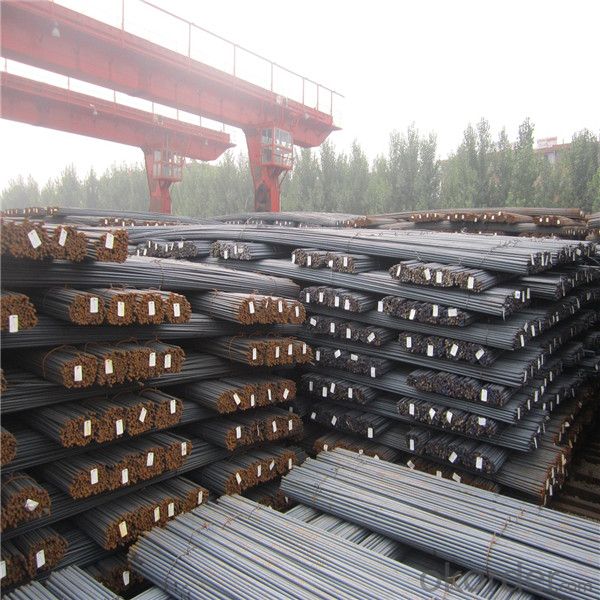

Our service
(1) We cooperate with famous factories with advanced equipment and well trained workers.
(2) We can provide factory price with trading company service.
(3) We continuously work on the improvement of our processes, guaranteeing consistently high standards
of quality to keep none compensation.
(4) We guarantee 24 hours response and 48 hours solution providing service.
(5) We accept small order quantity before formal cooperation.
(6) We deliver the agreed quality at the agreed time, reacting to changes in customer wishes in a flexible way.
(7) Due to our volume and selling power, we have excellent freight rates with shipping lines.
(8) We strive to always be fair and honest in our dealings with customers.
(9) We strive to work together with customers to achieve much more than we can achieve alone.
(10) Through our passion and commitment we aim to be a market leader in all our key markets. To maintain
our position as market leader we must continue to add value in all that we do.
FAQ:
1.Q: What's your MOQ(minimum order quantity)?
A: One full container, mixed acceptable .
2. Q: What's your packing methods?
A: Packed in bundle or bulk ..
3. Q: How can I buy CNBM products in my country?
A:Please send us an inquiry or email ,we will reply to you if there is distributor in your country
4. Q: Can we visit your factory?
A: Warmly welcome. Once we have your schedule, we will arrange the professional sales team to follow up your case.
5. Q: How long does it take to get the product if i place an order?
A:With the process of your requirements,we will pack and deliver in 3-7 days. If it is by sea shipment,it will take 15-45 days depending on different locations
- Q: What is the effect of fatigue on steel rebars?
- Fatigue can significantly weaken steel rebars, reducing their strength and structural integrity. It can lead to the development of cracks and fractures, making the rebars more susceptible to failure under applied loads. Therefore, fatigue is a critical factor that should be carefully considered in the design and maintenance of structures using steel rebars.
- Q: Cold drawn steel wire is a round bar or thread steel in Construction Engineering
- Of course it belongs to round bar. Thread steel can not be obtained by cold drawing. Besides, the outer diameter of the cold drawn steel wire is smaller, the surface is smoother and the hardness is slightly higher.
- Q: What are the factors to consider while designing a reinforced concrete structure with steel rebars?
- Designing a reinforced concrete structure with steel rebars requires careful consideration of various factors to ensure its strength, durability, and safety. Here are some key factors to consider: 1. Structural Requirements: The first step is to determine the specific purpose of the structure and its load-bearing capacity. This includes considering the intended use, maximum load, and any potential dynamic loads such as wind or earthquakes. 2. Material Selection: Choosing the right type and grade of concrete and steel rebars is crucial. The concrete mix should have adequate strength, workability, and durability to withstand the anticipated conditions. Similarly, the rebars should have sufficient yield strength and corrosion resistance to maintain structural integrity over time. 3. Reinforcement Layout: The design should include an appropriate layout and spacing of rebars to distribute the load uniformly and prevent cracking or structural failure. This involves determining the rebar size, quantity, and arrangement based on the calculated forces and bending moments. 4. Concrete Cover: The concrete cover refers to the thickness of concrete surrounding the rebars. It is crucial to provide adequate cover to protect the rebars from corrosion, fire, and other environmental factors. The cover thickness should be determined based on the exposure conditions and the required durability. 5. Bonding between Concrete and Rebars: Proper bonding between the concrete and rebars is essential for transferring forces effectively. The design should consider factors such as mechanical interlocking, chemical adhesion, and surface treatment to ensure a strong bond and prevent slippage or separation. 6. Construction Considerations: The design should account for practical construction aspects such as formwork, placement, and compaction of concrete. It should also incorporate appropriate detailing for construction joints, lap splices, and anchorage of rebars to ensure proper installation and ease of construction. 7. Serviceability and Durability: The design should address serviceability requirements such as deflection limits, cracking control, and long-term performance. Additionally, it should consider factors that impact durability, such as exposure to moisture, chemicals, temperature variations, and potential for corrosion. 8. Quality Control and Inspection: Quality control measures, including testing of materials, monitoring during construction, and inspection of completed work, are crucial to ensure that the design requirements are met. Regular inspections and adherence to construction standards and codes are essential for the overall integrity and safety of the structure. By considering these factors and following appropriate design codes and standards, a reinforced concrete structure with steel rebars can be designed to provide the desired strength, durability, and safety throughout its lifespan.
- Q: Can steel rebars be used in the construction of nuclear power plants?
- Yes, steel rebars can be used in the construction of nuclear power plants. They are commonly employed in reinforced concrete structures to provide strength and stability. However, specific requirements and regulations must be followed to ensure the rebars meet the necessary standards for nuclear power plant construction in terms of quality, composition, and performance.
- Q: What is the role of steel rebars in industrial flooring construction?
- Steel rebars play a crucial role in industrial flooring construction by providing reinforcement and strength to the concrete. They are used to prevent cracking and enhance the load-bearing capacity of the flooring, ensuring its durability and longevity.
- Q: Can the bars of steel bars be replaced by round steel bars?
- But there is a difference between steel reinforcement ratio can good toughness steel reinforced high strength reinforced surface than the thread in the engineering application of the surface force can he assisted according to what you want instead of general effect is no problem except in mechanical parts to replace.
- Q: Can steel rebars be used in renovation or retrofitting projects?
- Absolutely, renovation or retrofitting projects can indeed make use of steel rebars. In construction, steel rebars are frequently employed to fortify concrete structures and they can also be utilized in renovation endeavors to bolster pre-existing structures. When refurbishing or retrofitting a building, it often becomes imperative to reinforce the current structure in order to comply with modern building codes or support additional burdens. Strengthening walls, columns, beams, or slabs can be achieved by incorporating supplementary reinforcement into the concrete, thanks to the utilization of steel rebars. By integrating steel rebars into a renovation project, the building's structural soundness can be enhanced, thereby ensuring its safety and durability.
- Q: Can steel rebars be used in corrosive chemical environments?
- When steel rebars are used in corrosive chemical environments, their performance and durability may be compromised. Certain chemicals, especially acidic ones or those containing chlorides, can cause corrosion in steel. This corrosion can lead to structural damage and a decrease in load-bearing capacity. To reduce the risk of corrosion, there are several measures that can be taken. One common approach is to apply a protective coating, such as epoxy or zinc, onto the rebars. This creates a barrier between the steel and the corrosive environment. Another option is to use stainless steel rebars or other corrosion-resistant alloys, which offer better resistance against chemical corrosion. To determine the best course of action, it is essential to consider the specific chemicals present in the environment. Consulting with corrosion engineers and experts is recommended. Regular maintenance and inspections are also necessary to promptly identify any signs of corrosion and take corrective action. This ensures the reinforced concrete structures remain structurally sound and safe.
- Q: Can steel rebars be used in historical building restoration?
- Yes, steel rebars can be used in historical building restoration. Rebars are commonly used in construction to reinforce concrete structures and provide additional strength and durability. When it comes to historical building restoration, the goal is to preserve the original character and aesthetics of the structure while ensuring its structural integrity. Steel rebars can be carefully integrated into the restoration process to strengthen weak areas or replace deteriorated or damaged sections. The use of rebars allows for a more stable and long-lasting structure, ensuring the building's longevity for future generations. However, it is important to ensure that the use of steel rebars in historical building restoration is done in a way that respects the historical significance of the structure. The integration of rebars should be done discreetly, ensuring they do not compromise the building's original appearance or architectural features. Additionally, any restoration work on historical buildings should adhere to strict preservation guidelines and be carried out by skilled professionals with expertise in historical preservation. This ensures that the restoration process maintains the historical integrity of the building while incorporating necessary structural reinforcements, such as steel rebars.
- Q: What is the effect of exposure to high humidity on steel rebars?
- Exposure to high humidity can have a detrimental effect on steel rebars as it can promote corrosion, leading to loss of structural integrity and reduced lifespan of the rebars.
Send your message to us
Reinforced concrete iron rod for building construction
- Loading Port:
- China main port
- Payment Terms:
- TT OR LC
- Min Order Qty:
- 100 m.t.
- Supply Capability:
- 18000 m.t./month
OKorder Service Pledge
OKorder Financial Service
Similar products
Hot products
Hot Searches
Related keywords
